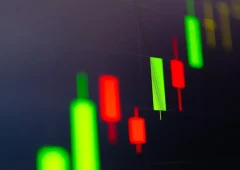Tether Plans U.S.-Issued Stablecoin After Trump Signs GENIUS Act
19.07.2025 15:00 1 min. read Kosta Gushterov
With President Trump officially signing the GENIUS Act into law, the regulatory landscape for stablecoins in the U.S. has entered a new phase—prompting major reactions from the industry’s top players.
Tether, the issuer of USDT and the world’s largest stablecoin by market cap, announced it will pursue dual paths to enter the American market. CEO Paolo Ardoino confirmed the company will introduce a U.S.-issued stablecoin and also adapt USDT to operate within the law’s “foreign issuer” framework.
This development signals Tether’s most direct engagement with U.S. regulation to date. Ardoino emphasized that the company is aligning its operations with anti-money laundering protocols, conducting full audits, and following a multi-year compliance roadmap to strengthen trust. While USDT will retain its focus on global cross-border usage, the new domestic stablecoin aims to meet the needs of U.S. businesses and consumers under a regulated framework.
Meanwhile, Circle, the issuer of USDC, welcomed the GENIUS Act as affirmation of its long-standing compliance-driven approach. CEO Jeremy Allaire stated that the law validates Circle’s transparent model, which includes full reserve backing, public audits, and institutional-grade infrastructure.
Both CEOs were present at the White House signing ceremony, though they did not interact publicly. Their attendance highlights the growing convergence between crypto finance and U.S. policy.
With the GENIUS Act now in effect, stablecoin competition in the U.S. is entering a new era—one shaped by compliance, transparency, and institutional backing.
-
1
Chinese Tech Firms Turn to Crypto for Treasury Diversification
26.06.2025 17:00 1 min. read -
2
What Are the Key Trends in European Consumer Payments for 2024?
29.06.2025 8:00 2 min. read -
3
FTX Halts Recovery Payments in 49 Countries: Here Is the List
04.07.2025 18:00 2 min. read -
4
Here is Why the Fed May Cut Rates Earlier Than Expected, According to Goldman Sachs
08.07.2025 15:00 2 min. read -
5
What Brian Armstrong’s New Stats Reveal About Institutional Crypto Growth
29.06.2025 15:00 2 min. read
U.S. Public Pension Giant Boosts Palantir and Strategy Holdings in Q2
According to a report by Barron’s, the Ohio Public Employees Retirement System (OPERS) made notable adjustments to its portfolio in Q2 2025, significantly increasing exposure to Palantir and Strategy while cutting back on Lyft.
Key Crypto Events to Watch in the Next Months
As crypto markets gain momentum heading into the second half of 2025, a series of pivotal regulatory and macroeconomic events are poised to shape sentiment, liquidity, and price action across the space.
Here is Why Stablecoins Are Booming, According to Tether CEO
In a recent interview with Bankless, Tether CEO Paolo Ardoino shed light on the growing adoption of stablecoins like USDT, linking their rise to global economic instability and shifting generational dynamics.
U.S. Dollar Comes Onchain as GENIUS Act Ushers in Digital Era
In a statement that marks a major policy shift, U.S. Treasury Secretary Scott Bessent confirmed that blockchain technologies will play a central role in the future of American payments, with the U.S. dollar officially moving “onchain.”
-
1
Chinese Tech Firms Turn to Crypto for Treasury Diversification
26.06.2025 17:00 1 min. read -
2
What Are the Key Trends in European Consumer Payments for 2024?
29.06.2025 8:00 2 min. read -
3
FTX Halts Recovery Payments in 49 Countries: Here Is the List
04.07.2025 18:00 2 min. read -
4
Here is Why the Fed May Cut Rates Earlier Than Expected, According to Goldman Sachs
08.07.2025 15:00 2 min. read -
5
What Brian Armstrong’s New Stats Reveal About Institutional Crypto Growth
29.06.2025 15:00 2 min. read


